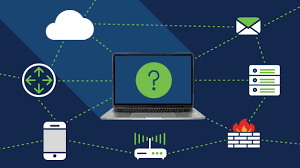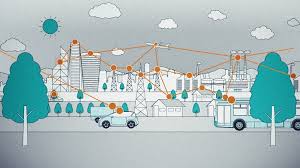Description
About the course
Professor. Animesh Mukherjee, a faculty from the Department of Computer Science and Engineering at the Indian Institute of Technology, Kharagpur, has designed this course. In this course, you will study the models and behaviors of networked systems followed by empirical studies of social, biological, technological and information networks. Also, you will explore the concepts of small world effect, degree distribution, clustering, network correlations, node centrality, and community structure of networks. In addition to this, there will be a detailed case study of citation networks.
After that, the course will deal with the Types of a network, which includes Social networks, Information networks, Technological networks, Biological networks, Citation Networks. Followed by that the properties of a network will be discussed, which include Small world effect, transitivity, and clustering, degree distribution, scale-free networks, maximum degree; mixing patterns; degree correlations; community structures; node centrality.
Learning Outcomes
After completing this course, you will be able to:
- Understand the theoretical and practical aspects of complex networks
- Understand the applications of complex networks.
- Understand the general principles that underlie the formation of a network.
- Boost your hireability through innovative and independent learning.
Target Audience
The course can be taken by:
Students: All students who are pursuing any technical/professional courses related to computer science/networking & security.
Teachers/Faculties: All teachers/faculties who wish to acquire new skills, or upgrade their skills.
Professionals: All network professionals.
Why learn Complex Network?
Complex network systems cover most aspects of our daily life and are concerned with a wide range of communities, such as transportation, communication and information, energy systems, disaster and risk reduction and mitigation, finance, social networks and perception, and biological and medical systems, as well as academic researchers on theories of reliability, safety, risk, complexity, and networks. Employment of computer network professionals is projected to grow 6 percent over the next ten years, about as fast as the average for all occupations. Demand for computer network architects will increase as firms continue to expand their information technology (IT) networks. Designing and building these new networks, as well as upgrading existing ones, will create opportunities for computer network architects. The expansion of healthcare information technology will also contribute to employment growth.
Course Features
- 24X7 Access: You can view lectures as per your own convenience.
- Online lectures: 10 hours of online lectures with high-quality videos.
- Updated Quality content: Content is latest and gets updated regularly to meet the current industry demands.
Test & Evaluation
There will be a final test containing a set of multiple choice questions. Your evaluation will include the scores achieved in the final test.
Certification
This course is free and it has no certificate.
Topics to be covered
- Complex Network Module 01
In this module, we will learn the Complex system and Complex network and see the different examples of Complex networks structure to understand the importance of this kind of Networks.
- Examples of Complex system and What is the different perspectives of a Complex system?
- Where do fit complex networks in complex systems and Historical Background of a Complex system as a network
- Why are we interested in Complex networks?
- Examples of Complex networks structure (Part-1)
- Examples of Complex networks structure (Part-2)
- Complex Network Module 02
In this module, we will try to learn Network analysis metric that is Degree Distribution and understand the metric using the example of citation networks and also see the self-similar topologies.
- What is the Degree Distribution and Law of Scientific Productivity?
- Decay Behavior of degree distribution and Cumulative degree distribution
- What do mean by a function being scale-free and check a power-law function is a scale-free function or not?
- What are Self-similar topologies?
- Example of degree distribution
- Complex Network Module 03
This module will start with the second metric that is called clustering coefficient and then see another very important quantitative metric that is Centrality metrics and then see degree centrality of a node in a network, and Centralization of a network; which means the variance in degree centrality.
- What is Clustering coefficient?
- How to measure the Clustering coefficient for the different real-world networks?
- What are the concept of the Small world and the 6 degrees of separation?
- What is Centrality and Degree Centrality of a node?
- What is Centralization of a network?
- Complex Network Module 04
In this module, we will study the Betweenness Centrality and Flow betweenness of the nodes in a network and then see the concept of the Eigenvector Centrality.
- What is Betweenness Centrality?
- What is Flow Betweenness?
- What is Eigenvector Centrality?
- Complex Network Module 05
In this module, we will learn Eigenvector centrality for undirected graph and the problem with Eigenvector centrality for undirected graph and its solution, and then learn the Concept of WWW graph and page ranking.
- Recap of Eigenvector Centrality
- What is the Problem when trying to convert the definition of eigenvector centrality for directed networks and what could be a solution?
- What is the World Wide Web graph and how to rank the web pages in a World Wide Web graph?
- What is the Quantitative measure for the page rank?
- Complex Network Module 06
In this module, we will learn Interpreting the web surfing and the idea of hubs and authorities.
- What is Page Rank algorithm and how to reinterpret the idea of Page Rank formula as a random process of web surfing?
- What is the idea of Hubs and authorities?
- How to express Hubs and authorities in mathematically or quantitatively?
- Complex Network Module 07
In this module, we will learn the Co-citation Index. and then learn symmetric or mirror image concept which is called the Bibliographic Coupling and also learn the different concept that is Reciprocity, Rich-club co-efficient, Entropy of the degree distribution and Matching index.
- What is Co-citation Index?
- What is Bibliographic Coupling?
- What is Reciprocity and Rich-club co-efficient?
- What is Entropy of the degree distribution and Matching index?
- Complex Network Module 08
In this Module, we will study the social network principles that are called Assortativity or Homophily, then also study the quantitative measure of Assortativity, and then The concept of Mixing, Signed Graph and Structural holes.
- What is Assortativity or Homophily?
- How to Quantify Assortativity?
- What is the concept of Mixing to quantify Assortativity?
- What is Signed Graph?
- What are Structural holes?
- Complex Network Module 09
The objective of this class is to learn the distance and degree-based measures and then learn a very important concept in a social network that is social roles.
- What are Cohesiveness and K-cliques?
- What are K-clan and its example and how to relax the maximality condition from K-clan
- What are K-plex and k-core and its example?
- What are Social Roles and how to quantify the notions of relationships?
- Complex Network Module 10
In this Module, we will we quantify one of the very first types of social roles that is the structural equivalence and then we will introduce to is called the automorphic equivalence.
- How to quantify the Structural equivalence? (Part-1)
- How to quantify the Structural equivalence? (Part-2)
- How to quantify the Structural equivalence? (Part-3)
- What is Automorphic equivalence and Isomorphism of a graph?
- Complex Network Module 11
The objective of this module is to learn about the automorphism representation in a cycle notation, and then see the Automorphic and Regular equivalence.
- How to represent automorphism using cycle notation?
- How to define Automorphic equivalence?
- What is Regular equivalence and how to define it?
- How to compute Regular equivalence?
- Complex Network Module 12
In this module, we will learn the community detection/Analysis and then learn Agglomerative clustering algorithm and then also learn 3 different ways in which we can define the notion of similarity or distance between a set of two clusters.
- What are the problem with community detection and how to handle this?
- What are the crucial steps in devising a clustering algorithm or a community detection algorithm?
- What is an Agglomerative method for devising a clustering algorithm?
- What are the different forms of Linkage?
- How Agglomerative clustering works and the problem with Agglomerative clustering algorithm?
- Complex Network Module 13
The objective of this module is to learn about the Agglomerative approach based on a local measure of outwardness and then see the Bisective approach and also learn to make the algorithm efficient by reducing some computation.
- What is Local algorithm based on agglomeration?
- What we have in Bisective approach?
- How can make the Bisective method efficient by reducing some computation? (Part-1)
- Complex Network Module 14
We shall study about the generalized version of a Bisective method for construct the community structure of various real-world networks and also study the notion of Modularity that estimates the density of the number of edges within a community.
- How can make the Bisective method efficient by reducing some computation? (Part-2)
- How can make the Bisective method efficient by reducing some computation? (Part-3)
- How to define the notion of Modularity for defining the Quality function?
- Complex Network Module 15
Understand the problem with Modularity function and see the extended version of modularity function, then see the use of quality function as a metric in the agglomerative algorithm for identifying the community structure, and then we will introduce two different types of matrices.
- What is the Problem with Modularity function and how to overcome that problem?
- How to use the quality function as a metric to identify community structures? (Part-1)
- How to use the quality function as a metric to identify community structures? (Part-2)
- What is the Incidence matrix and Laplacian Matrix?
- Complex Network Module 16
We shall try to understand an example for constructing Incidence and Laplacian Matrix for an undirected graph, and we will introduce certain properties, which will finally allow us to do a partitioning of the graph, based on spectral ideas.
- How to construct Incidence and Laplacian Matrix for an undirected graph?
- What are the spectral properties which allow doing a partitioning of the graph?
- Prove some of the Spectral properties (Part-1)
- Complex Network Module 17
We will continue with the last few properties that we have to still prove and then see the spectral bisection algorithm.
- Prove some of the Spectral properties (Part-2)
- What is Spectral Bisection algorithm?
- Complex Network Module 18
In this module, we will learn Citation analysis in general and then see the idea of Quantifying Interdisciplinarily in computer science and see the measure of Reference Diversity index.
- How to do Citation analysis? (Part-1)
- How to do Citation analysis? (Part-2)
- What are Interdisciplinary studies and how to quantify the concept of Interdisciplinary? (Part-1)
- Complex Network Module 19
In this module, we will see the Citation diversity index and Attraction index for quantify the Interdisciplinarity and then we motivate for interdisciplinary research in computer science and the last we will see the Citation profile for a particular paper.
- How to quantify the concept of Interdisciplinary? (Part-2)
- Evolution of Interdisciplinarity
- Why we go for Interdisciplinarity research in computer science?
- What is a Citation profile of a paper?
- Complex Network Module 20
In this module we will categorize the paper into at least 5 different classes and see properties of these classes, also see the Citation prediction and Stratification model for predicting the future impact of a paper and then compare its performance.
- How can citation profile of a paper be categorized and properties of its categories?
- How to do the core-periphery analysis?
- What is Citation prediction model for predicting the future impact of a paper?
- What is Stratification model for predicting the future impact of a paper??
- Compare the performance of Citation prediction and Stratification model
- Complex Network Module 21
In this module, we will study the use of some text features in order to enhance the citation prediction model and then see the citation behavior of Ancient paper usually in the community.
- What is the idea of count x and Cite words in papers and how these features enhance the task of citation prediction?
- What is the citation behavior of Ancient paper in the community? (Part-1)
- What is the citation behavior of Ancient paper in the community? (Part-2)
- Complex Network: Theory and Application - Final Quiz
Note : Parts of this material has been sourced from NPTEL, adapted and modified to adhere to our Pedagogical requirements and uploaded to YouTube for reuse under the same license.





Reviews
There are no reviews yet.